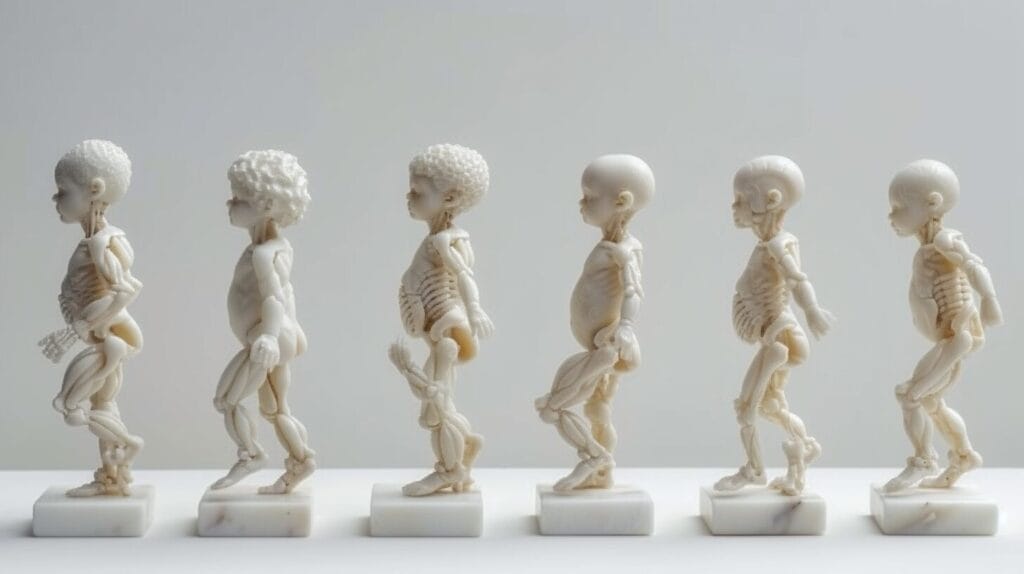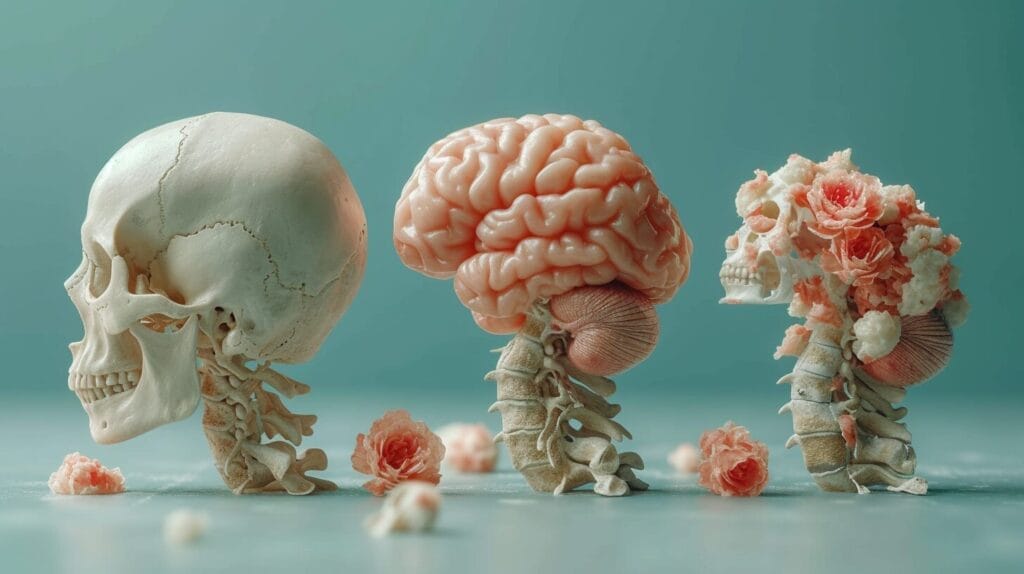The idea often examined and deeply understood during our journey, which emphasizes that joint efforts in childcare greatly influence their progress indicates the impact of proximal distal growth on childhood development. Our comprehensive research and discoveries powerfully underscore the considerable effect of the zone of proximal development and scaffolding theory on a child’s learning path and development.
So, what do these concepts entail, and how can they be effectively applied in educational practices? Let’s delve into the fascinating world of proximal distal development and uncover the crucial role of appropriate support, social interaction, and collaboration in maximizing children’s potential.
Key Takeaways
- Proximal distal development refers to the sequential pattern of growth and development in children.
- This pattern incorporates physical, cognitive, and motor development.
- The motor development follows a proximodistal pattern, starting from the core muscles and extending to the limbs.
- Cognitive development also follows a sequential pattern, with basic skills developing before more complex thinking abilities.
- Understanding proximal distal development helps us provide appropriate support and guidance to children.
Introduction to Proximal Distal Development

In exploring the concept of proximal distal development in child growth, it’s crucial to understand both the influences that occur in close proximity to the child and those that have a more distant impact.
Proximal distal development refers to growth and development occurring in a sequential pattern, starting from the center of the body and extending outward to the limbs. This development isn’t limited to physical growth; it also includes cognitive and motor development.
Motor development, as per proximal distal development, suggests children gain control over their core muscles before moving on to the more precise movements of their limbs. Similarly, cognitive development follows a sequential pattern, with children first developing basic cognitive skills before progressing to more complex thinking abilities.
Understanding proximal distal development is crucial for parents, educators, and caregivers. Recognizing that certain skills and abilities are building blocks for others allows us to create environments that foster optimal growth.
Motor Development and Proximodistal Principle

Motor development in children is a dynamic process influenced by the proximodistal principle. This principle explains the sequential and interconnected growth of motor skills from the core muscles to the extremities. Understanding this principle is key to comprehending how children acquire and refine their motor abilities. Here are some key points to consider:
Proximal and distal influences highlight the importance of proximal factors, such as the development of core strength and stability, in facilitating the subsequent development of distal skills, like fine motor control. Motor development follows a predetermined sequence, starting with gross motor skills and gradually progressing to more refined movements.
Gross motor skills involve larger muscle groups and whole-body movements. These skills lay the foundation for more complex movements and enable children to explore their environment and engage in physical activities.
Gross Motor Skills Development

Proficiency in gross motor skills is crucial for children’s overall physical development and exploration of their surroundings. Gross motor skills refer to the ability to control large muscle groups and perform movements such as crawling, walking, running, jumping, and throwing.
These skills are essential for enabling children to navigate their environment, engage in physical activities, and interact with others.
In developmental psychology, gross motor development follows a pattern of growth known as the proximodistal principle. This principle states that children first develop control over their trunk and then progress to mastering control over their arms and legs.
Various factors influence the development of gross motor skills in children. These factors include genetic predispositions, environmental factors, opportunities for physical activity, and the quality of motor experiences provided by caregivers and educators.
Fine Motor Skills Development

The development of fine motor skills is crucial for children’s overall dexterity and ability to manipulate small objects. Fine motor skills involve the coordination of small muscles in the hands and fingers, enabling tasks such as writing, drawing, and buttoning clothes.
Some points to consider when discussing fine motor skills development include:
- Factors influencing fine motor skill development: Genetic and environmental factors play a significant role. Genetic factors determine a child’s innate abilities, while environmental factors, such as opportunities for play and practice, can significantly impact skill development.
- Proximal-distal progression: Fine motor skills develop in a proximal-distal progression. Children first gain control over larger muscle groups, gradually refining their movements to manipulate smaller objects with precision.
Understanding the development of fine motor skills is essential for parents and educators to support children’s growth and learning.
How Does Proximal Distal Development in Child Growth Compare to Level Five Leadership Principles?
The concept of proximal distal development in child growth focuses on the sequential development of skills from the center of the body outward. Similarly, level five leadership principles prioritize humility and determination over personal recognition. Both emphasize gradual progression towards greater maturity and effectiveness.
Proximal and Distal Influences on Developmental Milestones

In exploring proximal and distal influences on developmental milestones, we find various factors significantly shaping a child’s growth and development. Fine motor development, which includes skills such as grasping objects and writing, follows a proximal to distal pattern.
Children first gain control of their shoulder and arm muscles before developing precise hand movements. Conversely, gross motor milestones, such as crawling and walking, follow a distal to proximal pattern. Children begin to use their legs and feet before gaining balance and coordination in their upper body.
To further illustrate the influence of proximal and distal factors on developmental milestones, consider the following examples:
| Milestone | Proximal Influence | Distal Influence |
|---|---|---|
| Grasping objects | Development of shoulder and arm muscles | Coordination of hand and finger movements |
| Crawling | Strength and control of leg and hip muscles | Balance and coordination in upper body |
| Writing | Fine motor control of hand and finger muscles | Hand-eye coordination and precision movements |
Conclusion
Our research on proximal distal development in child growth has provided valuable insights into the importance of the zone of proximal development and scaffolding theory in fostering children’s learning and development. We’ve highlighted the significance of providing appropriate assistance and support within the ZPD, as well as the benefits of social interaction and collaboration.
Our exploration of motor development and the proximodistal principle has shed light on the crucial role of proximal and distal influences on developmental milestones. These findings contribute to a deeper understanding of child growth and learning, informing more effective educational practices.
Frequently Asked Questions
What is proximal-distal development in child growth?
Proximal-distal development refers to the pattern of growth and development that occurs from the center of the body outward. It involves the progression of motor skills from the core or trunk of the body (proximal) to the limbs and extremities (distal). This principle of development is essential in understanding the sequential acquisition of fine motor skills in children.
How does proximal-distal development impact gross motor and fine motor skills?
Proximal-distal development influences the acquisition of both gross motor and fine motor skills. As children grow, they first develop core strength and stability in the proximal muscles before refining their coordination and dexterity in the distal muscles. This sequential development contributes to the mastery of various physical activities and tasks.
What are the principles of proximal-distal development in child growth?
The principles of proximal-distal development encompass the notion of cephalocaudal and proximo-distal direction of motor development. The concept emphasizes that motor development progresses from the head down and from the center of the body outward. Understanding these principles is vital in assessing and supporting children’s motor skill development.
What role does proximal-distal development play in occupational therapy for children?
Proximal-distal development is integral to occupational therapy for children, as it provides a framework for assessing and addressing motor challenges. Occupational therapists utilize the principles of proximal-distal development to design interventions that promote the progression of motor skills and facilitate independent functioning in daily activities.
How does proximal-distal development differentiate between normal infants and those with developmental challenges?
Proximal-distal development allows for the distinction between normal infants and those experiencing developmental challenges by highlighting the expected trajectory of motor skill development. It enables professionals to identify deviations from the typical proximal-distal sequence and address specific developmental needs effectively.

